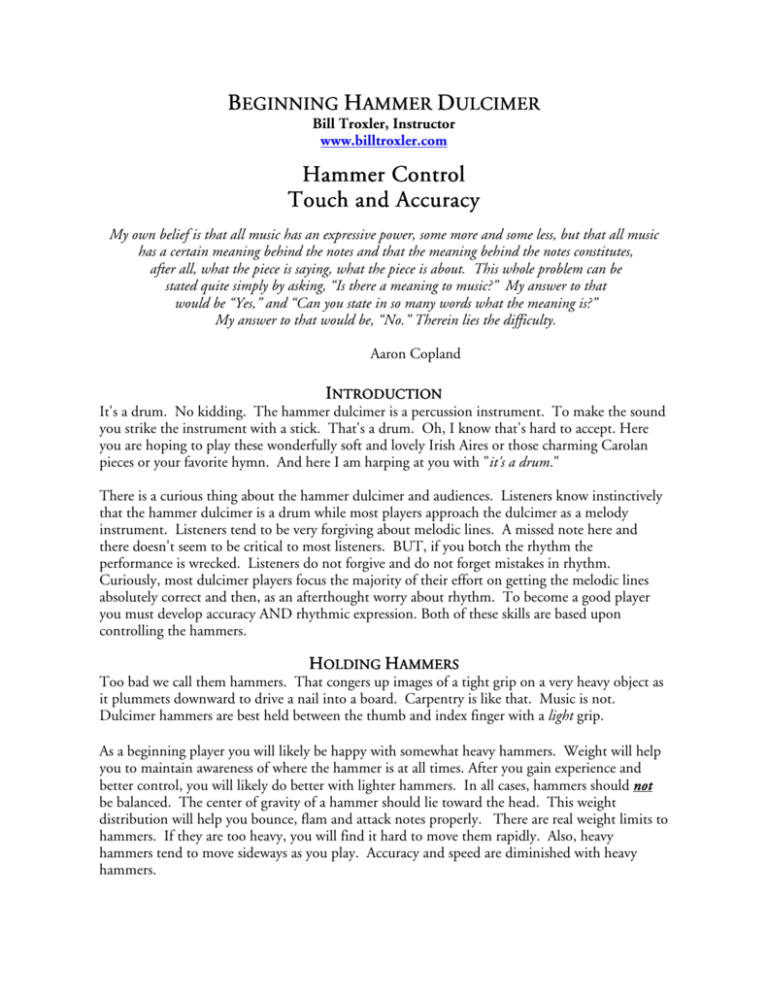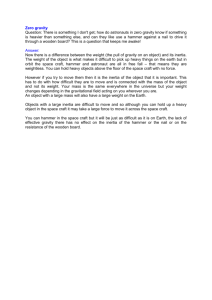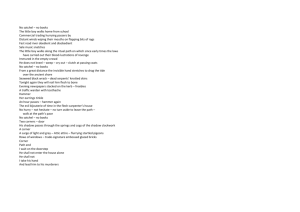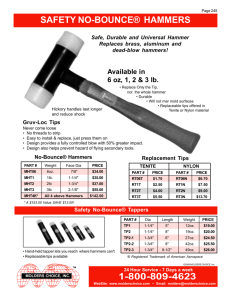
BEGINNING HAMMER DULCIMER
Bill Troxler, Instructor
www.billtroxler.com
Hammer Control
Touch and Accuracy
My own belief is that all music has an expressive power, some more and some less, but that all music
has a certain meaning behind the notes and that the meaning behind the notes constitutes,
after all, what the piece is saying, what the piece is about. This whole problem can be
stated quite simply by asking, “Is there a meaning to music?” My answer to that
would be “Yes,” and “Can you state in so many words what the meaning is?”
My answer to that would be, “No.” Therein lies the difficulty.
Aaron Copland
INTRODUCTION
It's a drum. No kidding. The hammer dulcimer is a percussion instrument. To make the sound
you strike the instrument with a stick. That's a drum. Oh, I know that's hard to accept. Here
you are hoping to play these wonderfully soft and lovely Irish Aires or those charming Carolan
pieces or your favorite hymn. And here I am harping at you with "it's a drum."
There is a curious thing about the hammer dulcimer and audiences. Listeners know instinctively
that the hammer dulcimer is a drum while most players approach the dulcimer as a melody
instrument. Listeners tend to be very forgiving about melodic lines. A missed note here and
there doesn't seem to be critical to most listeners. BUT, if you botch the rhythm the
performance is wrecked. Listeners do not forgive and do not forget mistakes in rhythm.
Curiously, most dulcimer players focus the majority of their effort on getting the melodic lines
absolutely correct and then, as an afterthought worry about rhythm. To become a good player
you must develop accuracy AND rhythmic expression. Both of these skills are based upon
controlling the hammers.
HOLDING HAMMERS
Too bad we call them hammers. That congers up images of a tight grip on a very heavy object as
it plummets downward to drive a nail into a board. Carpentry is like that. Music is not.
Dulcimer hammers are best held between the thumb and index finger with a light grip.
As a beginning player you will likely be happy with somewhat heavy hammers. Weight will help
you to maintain awareness of where the hammer is at all times. After you gain experience and
better control, you will likely do better with lighter hammers. In all cases, hammers should not
be balanced. The center of gravity of a hammer should lie toward the head. This weight
distribution will help you bounce, flam and attack notes properly. There are real weight limits to
hammers. If they are too heavy, you will find it hard to move them rapidly. Also, heavy
hammers tend to move sideways as you play. Accuracy and speed are diminished with heavy
hammers.
Hammer Control
Beginning Hammer Dulcimer
www.BillTroxler.com
Page 2 of 4
A light grip is essential for good hammer control. You will find that your grip will change from
very light to firm as you develop finesse in your playing. The varying hold on the hammers
allows for greater musical expression. Here's a benchmark. If you never drop a hammer while
playing, chances are your grip is too tight. Be relaxed with your hammers. A death grip will
insure you never loose a hammer, but it will kill your music.
The western grip places the hammer between the thumb and index finger. Much hammer
control is executed by squeezing or relaxing this grip. Most hammering is done by movements of
the wrist and the grip. Little, VERY little, hammering is done by moving the forearm. The
forearm positions the hammers. The wrists and fingers initiate the strike.
STRENGTHENING YOUR WEAK HAND
Most of us have a preference called “handedness.” We tend to be either left handed or right
handed. Playing the hammer dulcimer requires that both hands do the work more-or-less in
equal amounts. So, we’ve got to spend time strengthening our weak hand. If you are left
handed, well, the hammer dulcimer just might be your revenge on the right-handed world!!! A
strong left hand is essential in expressive playing. In fact, many tunes benefit greatly when they
are played using a left-hand lead. So, all of you right-handers, buckle-up, we’re going to do some
drills.
When we begin to play the dulcimer our teachers insist that we alternate our hammers. It is the
right thing to do because it makes our playing more fluid and more accurate. The downside is
that this approach insures that our weak hand will remain weak. The weak hand never gets any
special attention and that means it sort of snoozes through the music. The weak hand cannot do
its work in a stupor. All it has to do is remember "I'm next." So our playing never gets over the
heaviness of the weak hand.
The Hammer Control exercises are modified drills for snare drummers. The drills are designed
so that you can hear what each hand is playing. Left hammer on the left side of the treble bridge.
Right hammer on the right side of treble bridge. Any course will do. I suggest you try this in the
middle of the instrument. Say left hammer on D and right hammer on G.
Here is the basic drill. Now alternate your hammers at a medium pace maintaining a medium
volume. Slow down the pace; keep the volume the same. Speed up the pace, but do not increase
the volume. All of us have a tendency to play louder as the pace increases and play softer as the
pace decreases. Try this alternating pattern as fast as you can and soft as you can. Do not bounce
your hammers! Keep full control of every strike. That fast, but low-volume, exercise demands a
high level of concentration for most of us. It is essential that you stay relaxed but in full control
of the hammers. If you are doing this properly, most likely you will feel the muscles in your
forearm get tight. That is because these control your hammer strikes, and they are getting a
serious workout!
Once you have this alternating pattern and volume control down, explore the hammer control
exercises in the appendix. Exercises force you to abandon the strict rule of alternating hammers.
Hammer Control
Beginning Hammer Dulcimer
www.BillTroxler.com
Page 3 of 4
They also require both left and right hand leads. Work faithfully with these for BRIEF periods
and your playing will improve dramatically.
THE HAMMER STRIKE
You just smack it. Right? No. Absolutely not!!! The nature of your hammer strike is terribly
important to the quality of the sound you make. Here are the critical things to consider.
Do not initiate the hammer strike with your forearm.
forearm Don't play the instrument from your
elbow. The proper strike is almost entirely a movement of the wrist. Nuances come from the
thumb and index finger. You cannot gain control of volume or accuracy if you play from the
elbow. Playing from the arm will also dramatically increase the tension in your wrist, shoulders
and neck. Don't get confused when you watch a really good player. It's true their elbows and
their forearms are in constant motion. But the elbow and forearm move the hammer to the
location of the course to be struck. The actual strike is a join effort of the wrist and thumb and
index finger. The forearm plays a very small role in the actual hammer strike.
Keep your elbows by your side.
side One of the bad side effects of heavy concentration for many
players is rising elbows. Don't allow your elbows to drift out and up. When this happens your
hammers also shift position. They begin to point AT one another. They should be parallel to
one another. If the hammers aren't parallel you will find that accuracy, speed, and tone quality
will all suffer. In the worst case, the hammer heads will get tangled up and then all hope is lost –
probably one of the hammers will go flying into space. Stay relaxed. Don't raise your elbows.
The key word is RELAXED. You can't play the dulcimer while standing at military attention.
Wrists Must
Must Stay Relaxed.
Relaxed There should be absolutely no, I mean ZERO, tension in your
wrists. If your wrists lock-up, you will not easily initiate the hammer strike with your indexfinger-and-thumb grip. Tense wrists force the forearm to initiate the hammer strike. That’s very
bad. Control of hammer strikes is 99% in the wrists and gripping fingers. Don’t lock your
wrists.
Be certain you still have a neck. One of the human phenomena dulcimer teachers notice is
that, when difficult passages come up in class, many students exhibit the "vanishing neck
syndrome". As players get tense, their shoulders rise and their necks disappear. This posture is
extremely tiring. You will exhaust yourself in no time if you lock into this pose. And your
playing will suffer because all the muscles you need for that tiny little hammer strike are locked
into a pose of defense and terror. RELAX. Tell yourself that you are a good person and that
world peace is not dependent upon the quality of your dulcimer playing. Drop your shoulders.
Breathe deeply. Think of the beach or the mountains or your kitty or what ever makes you
happy. But RELAX. If you don't, chances are you're going to play very poorly and have only a
hellish backache for your trouble.
Arriving is Important but Leaving is More Important.
Important When classical percussionists are
taught to play drums, they are told not to hit the drum. They are told to lift the sound out of the
drumhead. They are taught to move the drumstick below the drumhead and pull out the sound.
The same is true for hand drummers. Watch a good conga or djembei player and see their hands
get off the drumhead as quickly as possible. This attack-and-leave method is true for the
Hammer Control
Beginning Hammer Dulcimer
www.BillTroxler.com
Page 4 of 4
dulcimer. Strike the string and get your hammer up and away. Lift out the sound. If you linger
on the string, you will muffle the sound or create an unintended and muddled bounce. The
secondary advantage in the fast exit is that your playing will become lighter. Now don't
exaggerate this. You shouldn't look like the dulcimer was a hot griddle and you are hopping
around it trying to avoid getting burned. Just get your hammers up and off the strings after the
strike. One way to help achieve this rapid departure is to think of your hands as dancers. Good
dancers don’t stomp around the dance floor – they lift – they defy gravity. Let your hands be
good dancers – let them lift.
Snap Softly.
Softly The hammer strike is a soft snapping of your wrist. Think about cracking a whip.
The essence of that maneuver is in a quick, violent snap of the wrist. When you strike the
dulcimer, the action is similar, but slower and not nearly so violent. The wrist moves the
hammer down to the string and as soon as contact is made, the wrist snaps back, pulling the
hammer away. If the volume is to be very low, this same motion can be imitated in the thumb
and index finger.
FORMS OF ACCURACY
Accuracy on the dulcimer takes on six basic forms:
Scalar Accuracy: reliable production of common-place scales
In the exercises you will find diatonic scales, rolling scales, octave-stutter scales, switched lead
scales and pentatonic scales. When the patterns get to be second nature, spend time working
with the concept of the beat window. Make the scales expressive. There are many passages in all
music that are pieces of the musical scale. Nowhere is scale more likely to appear than a fiddle
tune.
Vertical Accuracy: reliable production of distant tones up and down the bridges
Melodic lines often jump around. They aren't sequential or scalar. Many times we have to jump
a large interval to get the tone we need. The exercises will help you develop the accuracy you
need for those big melodic jumps.
Cross Bridge Accuracy: reliable production of sequential tones that lie on different sides of the
bridges
Melodies or supporting tones often must be reached across the bridge. The exercises provide
scales with anchor tones to help you develop this skill.
Bass Bridge Accuracy: reliable production of bass tones in the midst of a musical passage
Blind Accuracy: reliable production of musical passages without looking at the instrument
Separate Hands Accuracy: Reliable production of separate melodies in the left and right hands
Hammer Control
© 2007 G. William Troxler
All rights reserved






